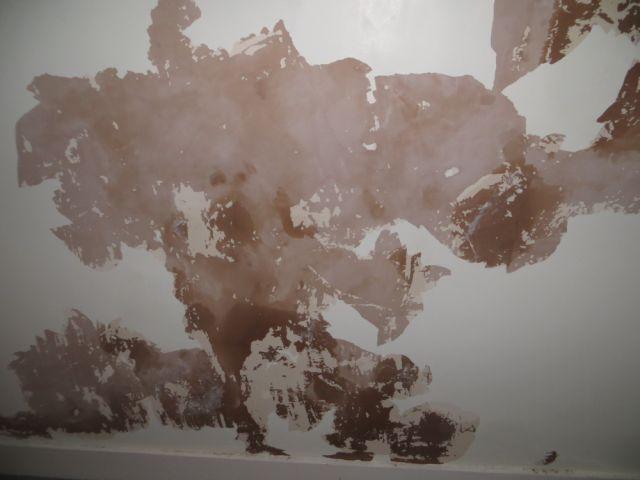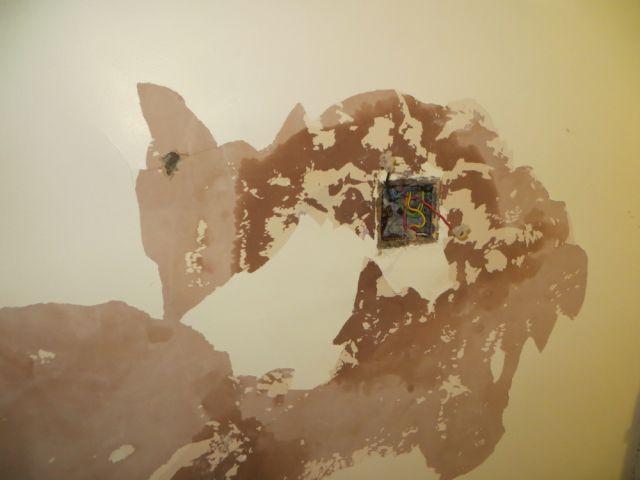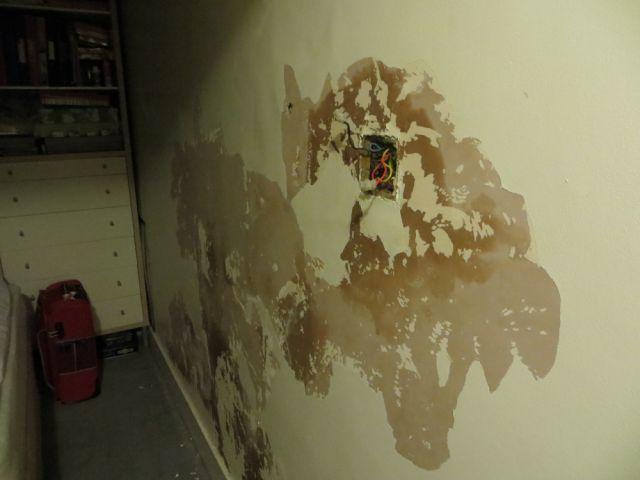The light switch has a nice circle of damp around it!
From the various coloured wires in the light switch, it appears to be a 2-way switch perhaps?
If the wires are running through conduits from floorspace to the loft void, there is probably some air flow which could be chilling the metal switch box, and there is condensation with warm bedroom air and the cold loft air that possibly gets drawn through the box.
If not due to air flow by that route, could simply be due to cold brickwork in contact behind the box with cracks and voids in the mortar layers due to age that is being chilled by the outer skin of the solid wall. The render is probably adding to the chill of the wall by not being able to dry off itself under the wet conditions. The principle is the same as a terracotta wine cooler.
The bed was likely up against the lower part of the wall there, wasn't it?
Again, condensation due to a cold external wall not being warmed by airflow, with the bedding insulating the immediate wall surface, but allowing water vapour to condense there. Look behind other furniture in the room and the rest of the house for signs of damp.
Get some air movement in there to warm up the wall - not extra heat, that will only make the humidity worse, but just to warm the wall to an ambient temperature. A desk fan is ideal since it can ventilate a large area at lowest speed. Open windows a crack during dryer weather to increase ventilation. Keep the room a little cooler, and try to keep the temperature more or less constant, as fluctuations in temperature (and thus humidity) lead to colder surfaces meeting warmer moist air, and thus condensation.
If there has not been any sign of damp there before, it will probably be transient. The conditions this winter regarding UK rainfall have been extreme.
Everything Ree says is perfectly sensible, and worth considering if it will not easily dry out with ventilation alone.




